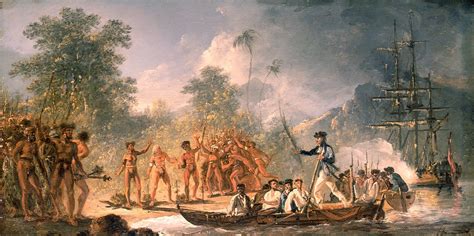Discover the rich history of Texas from early Native American settlements to the annexation into the United States. Explore Spanish exploration and colonization, Mexican independence, and the Republic of Texas.
Early Native American Settlements
Contents
Early Native American settlements in Texas can be traced back thousands of years, with evidence of human habitation dating back as far as 10,000 BCE. The region was home to diverse indigenous cultures, including the Apache, Comanche, Caddo, and many others, each with their own unique languages, customs, and traditions.
These early inhabitants relied on hunting, fishing, and agriculture to sustain their communities, and they developed sophisticated social and political structures. The Caddo, for example, were known for their large agricultural villages and trade networks, while the Comanche were skilled horsemen and fierce warriors.
As European explorers and settlers arrived in the 16th century, they encountered a complex tapestry of Native American societies in Texas. Unfortunately, the arrival of these outsiders also brought disease, warfare, and displacement, leading to the decline of many indigenous populations.
Despite the devastating impact of colonization, the legacy of Native American settlements in Texas continues to endure through the preservation of their cultural heritage and the resilience of their descendants.
Spanish Exploration and Colonization
Spanish exploration and colonization played a significant role in shaping the history of Texas. In the early 16th century, Spanish explorers such as Cabeza de Vaca and Francisco Vásquez de Coronado ventured into the Texas territory, laying the groundwork for future Spanish presence in the region. These explorers sought to establish trade routes and expand the Spanish empire, leading to the eventual colonization of Texas.
During the 18th century, Spain established a network of missions and presidios in Texas, with the intention of converting Native Americans to Christianity and protecting Spanish interests in the region. These missions and presidios formed the basis of Spanish settlement in Texas, and they played a crucial role in the colonization and development of the area.
One of the most well-known Spanish missions in Texas is the Alamo, which became a symbol of the Texas Revolution against Mexican rule. The impact of Spanish exploration and colonization on Texas is evident in the state’s culture, language, and architecture, reflecting the lasting influence of Spanish heritage in the region.
Overall, the Spanish exploration and colonization of Texas had a lasting impact on the state’s history, shaping its development and leaving behind a rich cultural legacy that continues to influence Texas to this day.
Mexican Independence and Texas
History of Texas
After gaining independence from Spain in 1821, Mexico began to govern the territory of Texas. The Mexican government encouraged American settlers to come to Texas in hopes of boosting the economy and defending the region from Native American attacks.
However, tensions began to rise between the Mexican government and the American settlers, as the settlers desired greater autonomy and representation in the Mexican government. This ultimately led to the outbreak of the Texas Revolution in 1835, with the famous Battle of the Alamo taking place in 1836.
The Texas Revolution resulted in Texas gaining independence from Mexico and establishing itself as the Republic of Texas. However, Texas faced challenges in securing international recognition and maintaining its independence, leading to debates over potential annexation into the United States.
In 1845, Texas was annexed into the United States, leading to the outbreak of the Mexican-American War in 1846. The war ultimately resulted in the United States acquiring vast territories, including present-day Texas, Arizona, New Mexico, California, and more.
Republic of Texas
Republic of Texas refers to the period in Texas history from 1836 to 1845, after the Texas Declaration of Independence from Mexico and before its annexation into the United States. After gaining independence, the Republic of Texas functioned as an independent nation for almost a decade, with its own government, flag, and currency. During this time, the Republic faced numerous challenges, including conflicts with Mexico, financial instability, and disputes over its borders.
One of the key events during the Republic of Texas was the presidency of Sam Houston, a prominent figure in Texas history. Houston played a crucial role in the formation of the Republic and served as its president from 1836 to 1838 and again from 1841 to 1844. His leadership and efforts to establish diplomatic relations with other countries were instrumental in shaping the early years of the Republic.
The Republic of Texas also faced significant internal strife, including tensions between the Anglo-American settlers and the Mexican population, as well as conflicts with Native American tribes in the region. These tensions often led to armed conflicts and further complicated the Republic’s efforts to maintain stability and govern effectively.
Ultimately, the Republic of Texas’ short-lived existence came to an end when it agreed to annexation into the United States in 1845, becoming the 28th state in the Union. The annexation marked the end of an era for Texas and set the stage for its future as a state within the United States of America.
Annexation into the United States
After gaining independence from Mexico in 1836, the Republic of Texas existed as a separate nation for almost a decade. However, due to financial difficulties and the threat of Mexican invasion, many Texans began to consider the possibility of annexation into the United States.
President John Tyler had been a vocal supporter of the annexation of Texas, and in 1844, he signed a treaty of annexation with the Republic of Texas. However, the treaty faced strong opposition in the United States Senate, and it was ultimately rejected.
It wasn’t until 1845 that the annexation of Texas into the United States was finally accomplished. President James K. Polk, a strong advocate of the idea, worked with Congress to pass a joint resolution in favor of annexation. Texas was officially admitted to the Union as the 28th state on December 29, 1845.
The annexation of Texas was a controversial move, as it reignited tensions between the North and South over the issue of slavery. The addition of a new slave-holding state fueled the flames of the growing abolitionist movement in the North, setting the stage for the divisive conflict that would become the Civil War.
Today, the annexation of Texas into the United States remains a pivotal moment in the history of the state, marking its transition from an independent republic to a key player in the ever-expanding nation of the United States.













